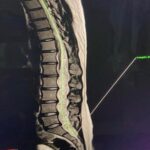healthy soch
New Delhi, November 18, 2019:
Types of Respirators or Masks
- The first type of respirator removes contaminants from the air and are called air-purifying respirators (APRs). APRs include particulate respirators, which filter out airborne particles, and “gas masks,” which filter out chemicals and gases.
- Other respirators protect by supplying clean respirable air from another source. Air-Supplying Respirators (ASRs) comprise this category of respirators. They include airline respirators, which use compressed air from a remote source; and self-contained breathing apparatus (SCBA), which include their own air supply.
Fire and Simple wet Cloth
- N95 mask doesn’t do anything for CO and gases and they’re very difficult to breathe with.
- Wet cloth held over the nose and mouth will provide protection from smoke particulates. Wet cloth will absorb most of the water-soluble gases (hydrogen cyanide & hydrogen chloride). For wetting use water, soft drink or other non-alcoholic beverages to moisten the fabric.”
- During World War One, Canadian soldiers being attacked with chlorine gas
(Mustard Gas) were told to urinate into their handkerchiefs and to breathe through
that wet cloth. The chlorine gas would dissolve in the water as it
passed through the handkerchief, thereby keeping our troops safe and
alive. - A dampened cloth will have a modest effectiveness against SO2, since SO2 dissolves readily in water.
- CO is also soluble in water, but less so.
- Will also take care of > 10-micron dust particles
Pollution and particulate filters
Three types
Particulate filtering facepiece respirators or disposable respirators because the entire respirator is discarded when it becomes unsuitable for further use due to considerations of hygiene, excessive resistance, or physical damage. These are also commonly referred to as “N95s.”
Elastomeric respirators or reusable respirators because the facepiece is cleaned and reused but the filter cartridges are discarded and replaced when they become unsuitable for further use.
Powered air-purifying respirators (PAPRs) where a battery-powered blower moves the airflow through the filters.
Disposable particulate filter types: N, P and R
The particulate respirator will have an N, R, or P designation along with an efficiency rating such as 95, 99, or 100.
N: No oil is present in the air, not oil resistant
R: Oil is present, but only for a single shift or 8 hours of continuous or intermittent use. Oil resistant
P: Oil is present. Oil proof.
Efficiency or High Efficiency Particulate Air (HEPA) filter
- 100: The filter is expected to trap 99.97 particles of at least 0.3 microns in diameter out of every 100.
- 99: Trap 99 particles of at least 0.3 microns in diameter out of every 100.
- 95: trap 95 particles of at least 0.3 microns in diameter out of every 100.
How efficient the respirator’s filter capacity is expected to be against particles that are at least 0.3 micrometres.
As the letter rating and number rating increase, breathing fatigue will increase. Typically, an end user will find an N95 respirator cooler, and easier to breathe through than N 99 mask.
Surgical mask: is intended to be worn to catch microorganisms shed in liquid droplets and aerosols from the wearer’s mouth and nose. They are made from paper or other non-woven material and should be discarded after each use. They cover > 5-micron particles. They are not designed to protect the wearer from inhaling airborne bacteria or virus particles.
Flu virus is 0.17 microns in size but the droplet is > 5 micron in diameter. Regardless of usage, masks should be discarded when used beyond 8 hours\
Cotton and gauze masks do not serve as surgical masks as they do not offer adequate filtration of microbes.
Dust or particulate masks
They are manufactured to protect against particulate matter and do not protect against chemicals such as vapors and mists. For this reason, it is dangerous to confuse dust masks with paint masks.
Wool is still used today as a filter, along with plastic, glass, cellulose, and combinations of two or more of these materials. These filters cannot be cleaned and reused and have a limited lifespan.
Filtering half mask with exhalation valve (class: FFP3)
Mechanical filters remove contaminants from air in the following ways:
- Interception: when particles following a line of flow in the airstream come within one radius of a fibre and adhere to it;
- Impaction: when larger particles unable to follow the curving contours of the airstream are forced to embed in one of the fibres directly; this increases with diminishing fibre separation and higher air flow velocity
- Diffusion: where gas molecules collide with the smallest particles, especially those below 100 nm in diameter, which are thereby impeded and delayed in their path through the filter.
- Coating: Certain resins, waxes, and plastics as coatings on the filter material to attract particles with an electrostatic charge that holds them on the filter surface;
- Gravity and allowing particles to settle into the filter material
Only particulates carried on an air stream and a fibre mesh filter, diffusion predominates below the 0.1 μm diameter particle size. Impaction and interception predominate above 0.4 μm. In between, near the 0.3 μm most penetrating particle size, diffusion and interception predominate.
Particulate filters are designed to keep the velocity of air flow through the filter as low as possible. This is achieved by manipulating the slope and shape of the filter (V shape) to provide larger surface area.
A HEPA filter can remove as much as 99.97% of all airborne particulates with aerodynamic diameter of 0.3 micrometres or greater. Some high-quality air purifiers have as much as 60 square feet of filter material folded inside their HEPA filter. In addition to the amount of filter material.
Types of HEPA Filters
Air purifiers
Contain an HEPA filter and a fan device
CADR (Clean Air Delivery Rate)
- CADR rating indicates how fast the air purifier can clean the air within a particular size room. For example, an air purifier with CADR rating of 300 cfm will clean a room of 300 sq. ft much faster than an air purifier with CADR rating of only 200 cfm.
- Ionizer is one reason for making CADR ratings false. An ionization is a process of sticking many small particles into a bigger one, but not trapping them. Usually, these bigger formed particles are dropped on the floor and wall. Without a proper removal, these pollutant particles are ready to be in the air once again.
- CADR rating is taken in CFM which stands for cubic feet per minute, or in m³/hour. CADR measurement is usually for pollen, smoke, and dust. These three pollutants are not only small in size but also the most unwanted particles in the air.
- CADR ratings only show only the cleaning capacity, not the cleaning capability.
- Air exchange per hour: Three air changes per hour would require a system that produces 150 CFM or 9,000 cubic feet per hour. A medical clinic needs a minimum of 10 air changes per hour would a filtration system that produces 30,000 cubic feet per hour or 500 CFM.
- Area of the room = length x width x height (5 feet long, 20 feet wide, 10 feet height =,000 cubic feet
- One requires a certain number of air changes per hour: the case of a clean room type requirement, those are usually designated by Class. Such as Class 100,000, 10,000, 100, 10 and 1. These are rated as .3 microns per cubic foot. As an example, a class 10,000 clean room environment would need to meet the criteria of nothing over 10,000 particles per cubic foot at .3 microns or smaller. Considering the room without filtration could easily register 400,000 particles plus per cubic foot at .3 microns, this reduction level requirement is significant.
- For most situations you will want somewhere between 2 and 5 air changes per hour. In other words, to clean the air every 12 to 30 minutes in a room. If you have smoke, severe allergies, asthma or COPD we suggest you stick with 5 air changes per hour to get enough air flow to keep the air in your room very clean.
- CADR is based on the highest fan speed. When you run the air purifier on a lower fan speed the room coverage will also decrease.
Dr KK Aggarwal
President CMAAO and HCFI
healthysoch







